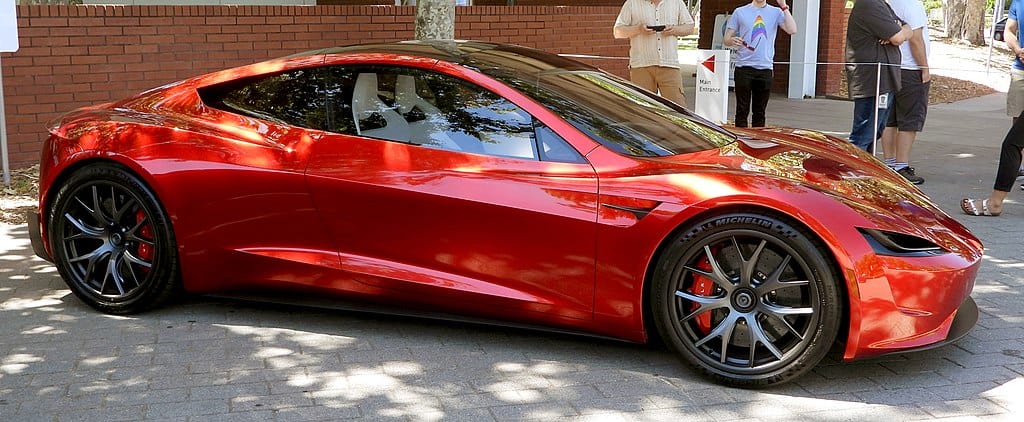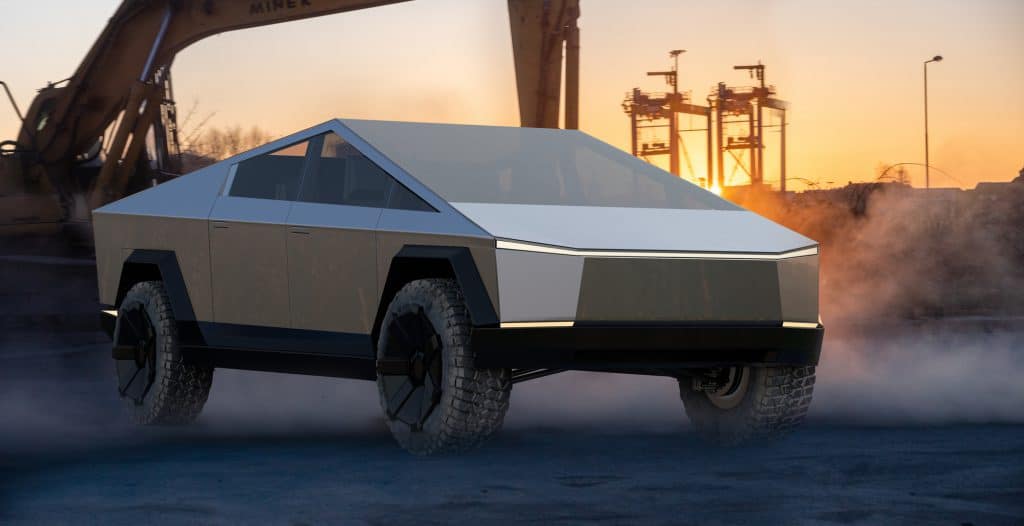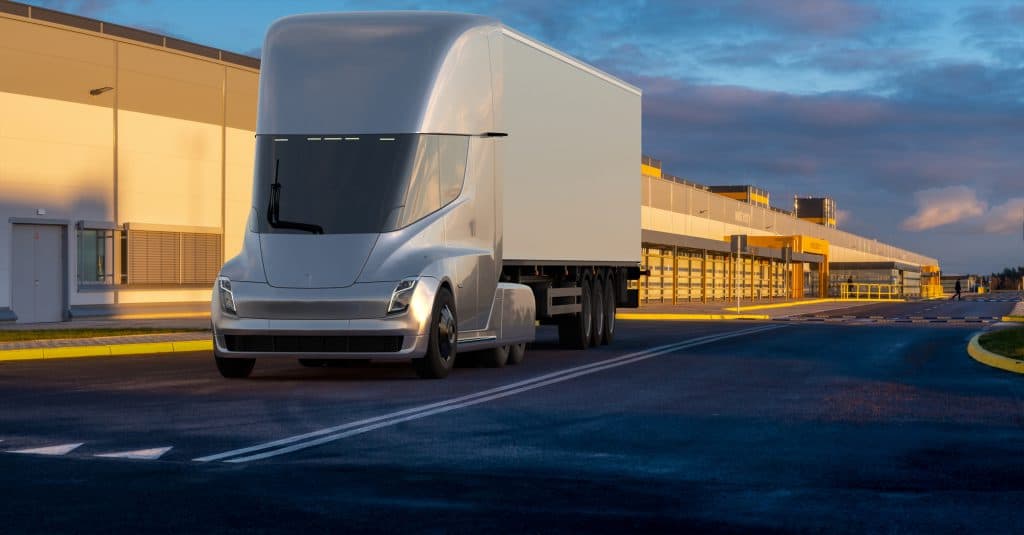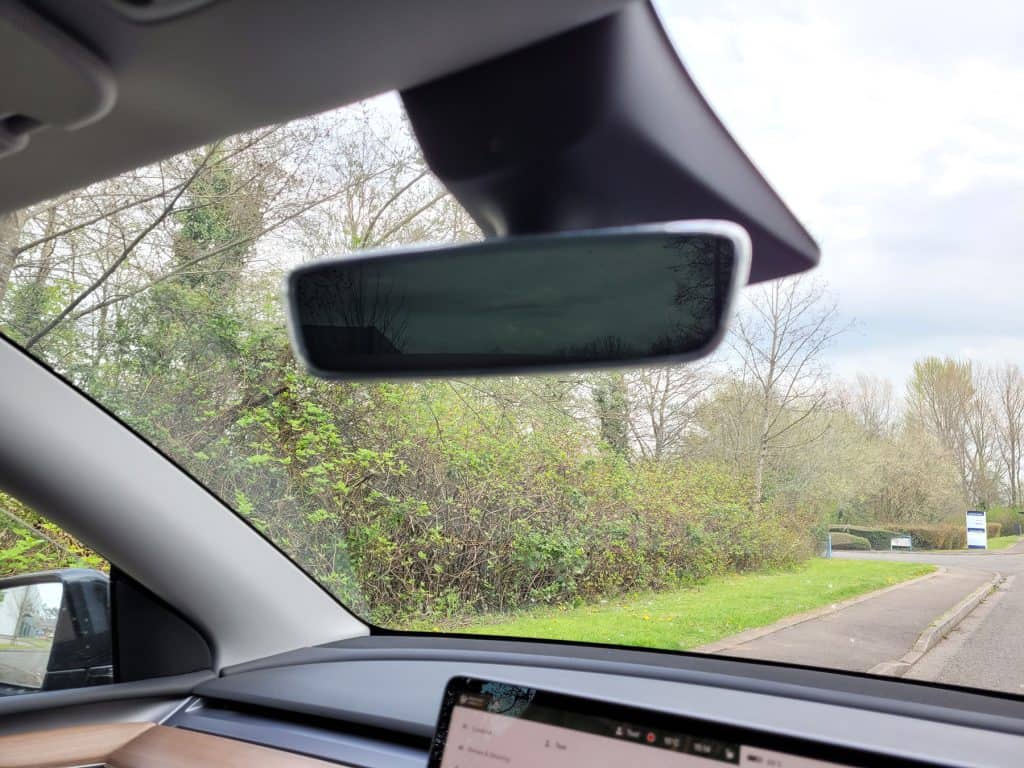As you read today’s blog title, did you start scratching your head and racking your brains to try and think of the last time you saw a Tesla car with no side mirrors and no rear-view mirrors? You might actually struggle at first, but then you likely start questioning whether any Tesla model you’ve seen really has them…actually, most of them do.
So why today’s blog. One reason you probably can’t immediately think of which Teslas don’t have these mirrors is because it’s more connected with Teslas that haven’t come out yet, such as the new Roadster, and the Cybertruck. In today’s blog, we’ll be taking a closer look at mirrorless Tesla cars of the future, why they might exist, and why it might not be the problem that you imagine.
Background: Mirrorless Tesla Design
Over the last several years, Tesla has been constantly teasing us with images of their next-generation models like the Cybertruck, the new Roadster and others. One of the most striking things about these images, once you get past the truly unique shape of the Cybertruck, is a notable omission from the exterior — no mirrors.
Then again, reports of sightings of the Cybertruck in testing as recently as October 2021 show that the Cybertruck has now been fitted with mirrors, so what’s going on in Tesla’s mirrorless design world. Let’s look at each model.
Roadster

The concept of a mirrorless Tesla was hinted at back in August 2018 when Elon Musk was talking about the next-generation Tesla Roadster in an interview. The general idea seemed to be to replace traditional side mirrors and the rear-view mirror with a digital feed from on-board camera technology.
After all, new cars are increasingly loaded with cameras and sensors. Why add air resistance and drag with side mirrors when you could now feed everything to a handy screen?
In his interview, Musk claimed that a prototype of such a setup made in 2013 for the Model X (later released in the 2016 model year with side mirrors) was in line with regulations as laid down by the various road safety authorities. As it turns out, he was wrong as he discovered when he took the design to these authorities and demonstrated how they would work. They were not amused, and his bid was unsuccessful.
During a different interview, Musk was quoted as saying: “Manufacturers are required to have side mirrors [on their cars], but I believe that the owner is not.” This enlightening statement seems to indicate that Musk is continuing in his determination to find a mirrorless solution to his new generation of vehicles.
Cybertruck

Continuing the mirror saga was the hotly-discussed Cybertruck with its unforgettable shape, awesome power and unique features. While just about every early image of the Cybertruck showed no side mirrors, it seems that things have changed. When it was unveiled for the first time back in November 2019, there were Autopilot cameras loaded into the front fender that were supplying the images that otherwise would be those seen in the side mirrors:
Unfortunately, however, Tesla is being pressured by legal requirements, but Musk still thinks he has the “owner is not” ace up his sleeve. In a reply to a frank tweet to a Tesla follower, Musk revealed that the owner might be able to remove the mirrors themselves. The original tweet from “mclovin” read in a very frank and despondent tone:
“I’m not ok with side mirrors on the #cybertruck [Elon Musk]”
To which Musk replied: “They’re required by law, but designed to be easy to remove by owners.”
To be clear, Musk is not advocating for his customers, present or future, to break the law by removing side mirrors. What he’s referring to is a kind of future-proofing measure, something Tesla is well known for.
As Tesla continues its campaign to get laws and rules changed (see further below for more on that), it will ensure in the meantime that people who buy a Roadster or Cybertruck will be able to remove those pesky mirrors when the time inevitably comes that they are no longer a legal requirement.
Tesla Semi

The Tesla Semi is the unique electric truck, one of the biggest USPs of which according to Tesla is the incredibly low drag coefficient of just 0.36 Cd. They also love to talk about its ability to accelerate from 0 to 60 mph in just 20 seconds when carrying 80,000 lbs of cargo. Part of that sleek aerodynamic design and keen acceleration is the absence of side mirrors.
Tesla has claimed in the past that side mirrors are creating something like 3 to 6 percent of the total drag that a typical vehicle experiences. It may not sound a great deal to you or me, but to an automotive engineer, that represents a significant difference, especially when you know that you could regain those percentage points just by the simple action of removing the side mirrors. No wonder Musk is so keen!
Virtual Mirrors – Is There Hope?
Musk may still be working on the law in the United States, but in other territories around the world, the virtual mirror concept is already taking off, with Audi and Honda both marketing it in their new electric vehicles:
To be more exact, the Audi e-tron and the Honda e are both using the virtual mirror technology using cameras with anti-freezing heated lenses to get data and project it onto a digital screen inside the vehicle on the far driver’s side of the dash adjacent to the door.
The idea behind the virtual mirrors is that it provides a flawless digital display that can do all the things that a traditional side mirror can, but with added technology bonuses like the ability to zoom in and out, and also that the side cameras will assist with parking.
At the same time, OEMs are being careful about how they construct and position them because they know that multiple generations of drivers have gotten used to the regular side mirrors and now look to that spot as a matter of reflex rather than any real intention.
When getting used to the new position of the screen, there is some danger that people will be distracted from the road longer as they look to the regular spot, see no mirror, remember to look to the new spot and then back to the road. The whole process takes longer. Could Musk have the same issue with his mirrorless Roadsters and trucks?
A Mirrorless Car, Is it Really Possible? Is it Even Legal?

The technology itself for virtual mirrors is not illegal in the US. If your car has them installed, you wouldn’t be pulled over, ticketed or in violation of any law. The current legal position isn’t anti-virtual, but rather fiercely PRO mirror. What we mean is that OEMs can install all the cameras they want, just so long as there is a regular mirror still there.
This is what Musk is now trying to change. Specifically, it’s Federal Motor Vehicle Safety Standard No. 111 that he needs to change; the one that pertains to “rear visibility.” This requires that all vehicles “be equipped with rearview mirrors to provide drivers with a view of objects that are to their side or their side and rear.”
Is there hope for Musk in this legal crusade? As it happens, yes there is. In late 2019 there was published an edition of the US government’s Federal Register in which the NHTSA (National Highway Traffic Safety Administration) was apparently seeking further information on vehicles using a CMS (Camera Monitor System).
It seems, therefore, that leading authorities like the NHTSA are open to the idea, but just feel that more information is needed. That’s fairly easy to understand where safety is concerned.
Conclusion: Are Digital Mirrors the Future?
There’s a lot of reason to believe that Musk will get his wish and his new Roadster and Cybertruck models will be able to shed their mirrors and gain that stylish aerodynamic composure that he and his engineers crave so much.
First of all, the fact that technology in cameras and displays has improved so much in the past decade does make the notion of virtual mirrors and displays more feasible. Second, other countries are already using them and thus are likely to prove that they are effective and safe.
The US market may be a little behind on this one point, but with continued pushing from companies like Tesla, not to mention Audi and Honda who likely wish to sell that same technology, it’s surely inevitable that sooner or later that domino will fall.